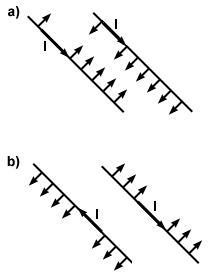Please wait while we process your payment
If you don't see it, please check your spam folder. Sometimes it can end up there.
If you don't see it, please check your spam folder. Sometimes it can end up there.
Please wait while we process your payment

By signing up you agree to our terms and privacy policy.
Don’t have an account? Subscribe now
Create Your Account
Sign up for your FREE 7-day trial
By signing up you agree to our terms and privacy policy.
Already have an account? Log in
Your Email
Choose Your Plan
Individual
Group Discount
Save over 50% with a SparkNotes PLUS Annual Plan!
 payment page
payment page
Purchasing SparkNotes PLUS for a group?
Get Annual Plans at a discount when you buy 2 or more!
Price
$24.99 $18.74 /subscription + tax
Subtotal $37.48 + tax
Save 25% on 2-49 accounts
Save 30% on 50-99 accounts
Want 100 or more? Contact us for a customized plan.
 payment page
payment page
Your Plan
Payment Details
Payment Summary
SparkNotes Plus
You'll be billed after your free trial ends.
7-Day Free Trial
Not Applicable
Renews July 16, 2025 July 9, 2025
Discounts (applied to next billing)
DUE NOW
US $0.00
SNPLUSROCKS20 | 20% Discount
This is not a valid promo code.
Discount Code (one code per order)
SparkNotes PLUS Annual Plan - Group Discount
Qty: 00
SparkNotes Plus subscription is $4.99/month or $24.99/year as selected above. The free trial period is the first 7 days of your subscription. TO CANCEL YOUR SUBSCRIPTION AND AVOID BEING CHARGED, YOU MUST CANCEL BEFORE THE END OF THE FREE TRIAL PERIOD. You may cancel your subscription on your Subscription and Billing page or contact Customer Support at custserv@bn.com. Your subscription will continue automatically once the free trial period is over. Free trial is available to new customers only.
Choose Your Plan
This site is protected by reCAPTCHA and the Google Privacy Policy and Terms of Service apply.
For the next 7 days, you'll have access to awesome PLUS stuff like AP English test prep, No Fear Shakespeare translations and audio, a note-taking tool, personalized dashboard, & much more!
You’ve successfully purchased a group discount. Your group members can use the joining link below to redeem their group membership. You'll also receive an email with the link.
Members will be prompted to log in or create an account to redeem their group membership.
Thanks for creating a SparkNotes account! Continue to start your free trial.
We're sorry, we could not create your account. SparkNotes PLUS is not available in your country. See what countries we’re in.
There was an error creating your account. Please check your payment details and try again.
Please wait while we process your payment

Your PLUS subscription has expired
Please wait while we process your payment
Please wait while we process your payment

History of the Study of Magnetism
Because magnetic fields were not discovered until recently, the history of how they were discovered is quite interesting, and informative.
We begin by giving an empirical history of the development of electromagnetic theory. As stated, people had long known that magnetic fields existed, but the only known source of these fields were permanent magnets, and no link was made to electricity. In the early 1800's, Hans Christian Oersted began to make the connection between electricity and magnetism. Oersted did most of his work using compass needles, but we will derive the existence of magnetic fields, and their relation to electricity, using more familiar systems-current carrying wires.
Consider two current carrying wires running parallel to one another. A current
is simply a collection of moving charges. Traditional electric theory predicts
that, since the net charge on each wire is zero, there is no interaction between
the two wires. Experiments in the 1800's, however, showed a surprising result:
the wires were actually attracted to each other! The experiment was repeated,
with the currents running in opposite directions, with the result that the wires
were mutually repelled. Both situations are depicted below.

This experiment established that there was some sort of connection between magnetism and electricity, but a few more distinctions had to be made to generate a coherent definition. Firstly, if a metal sheet (a conductor) were placed between the two wires, it had no effect on the phenomenon. Since conductors shield electric forces, clearly this phenomenon was not the result of some unknown electrical interaction. Secondly, if a static charge (i.e. a charged particle that does not move) were to replace one of the wires, the charge itself would feel no forces.
From these empirical observations we can develop a qualitative understanding of magnetic forces and fields. Let us assume first that the observed phenomenon is in fact the result of a magnetic field. Where does the field come from? Well, since the only objects in the experiment are wires, we can make the following statement linking electricity and magnetism:
Magnetic fields are caused by moving charges.
From further experiments, scientist determined that any charged particle with a velocity causes a magnetic field. The second question that must be asked about magnetic fields is on what objects do they act? The observation that a nonmoving charge is not affected leads us to our second statement about magnetic fields:
Magnetic fields only act on moving charges
From these two statements, we may think of electricity and magnetism in the following way. Electricity is the study of the interaction between static charges. Magnetism is the study of the interaction between moving charges. Both result from the existence of electric charge, and can simply be seen as different topics in the study of electric charge. It goes without saying that the two are interrelated.
Please wait while we process your payment

